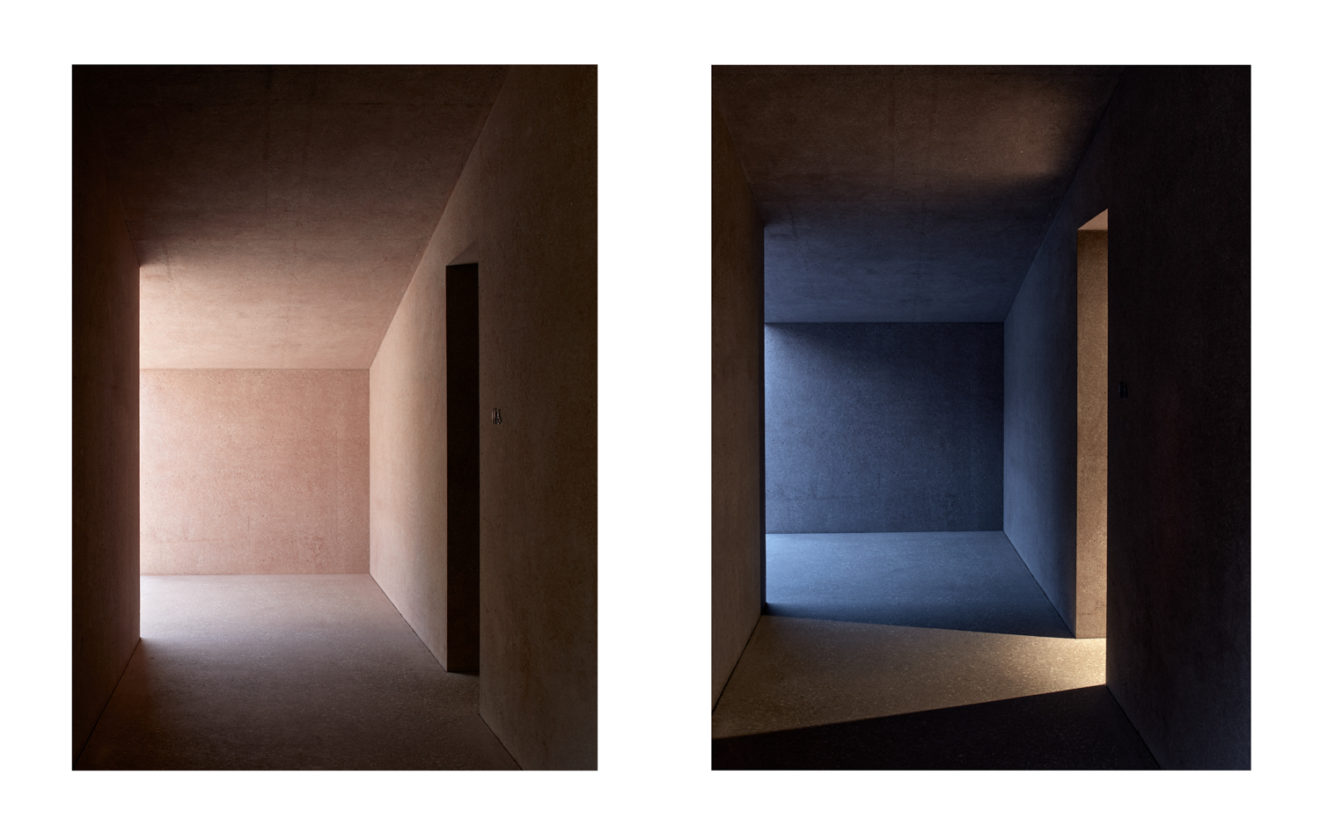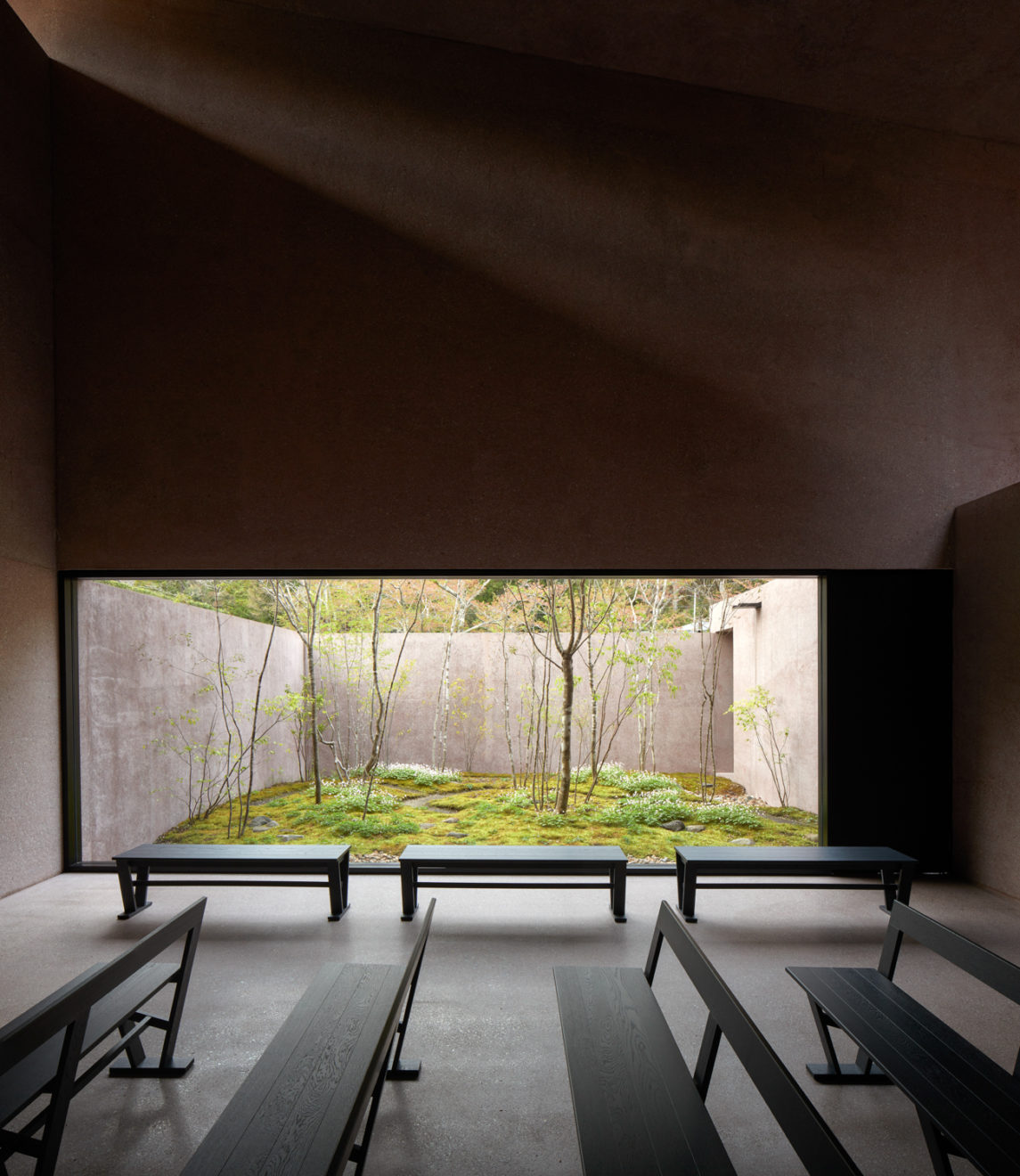Edmund Sumner
Edmund Sumner was just 12 years old, poring over the pages of Blueprint and Architectural Review, when he knew he wanted to photograph for a living. Years later, his childhood dream has taken him all over the world, shooting beautiful buildings for those very same publications, as well as his own online gallery shop. Here, he gives us an insight into what makes a house a home and why the most difficult thing for him to photograph is actually his own home.
My father was an interior designer, and both my brother and sister trained in architecture and interior design respectively – I was the rebel of the family and dreamed of adventures with my camera. I started taking pictures as a child and recall methodically making albums and small photo stories of day-to-day family life. Around the age of 12, I went along when my father was having his work professionally photographed and remember being utterly transfixed by the process. There was an infectious energy, an air of optimism and excitement, and I knew then I wanted to be a photographer.
Most people grow up with magazines such as National Geographic, Vogue etc. I grew up with Domus, Blueprint and Architectural Review. It was Blueprint in particular (under Editor Peter Davey) that opened my eyes to architectural photography as a stand-alone genre and I began to recognise certain photographers’ names and styles. I recall in particular the work of Chris Gascoigne and Dennis Gilbert, and began to wonder if I could ever do what they do
I decided against a formal education in photography and worked as a photographic assistant. My timing was good; Wallpaper* had just launched and architecture and design was going mainstream. I wasn’t the best assistant, far too excited by the subject matter, and so jumped at a small commission photographing a shop by a young up-and-coming architect. The project got published which, in turn, slowly led to some editorial commissions.
I think of my photographic style as being intense, playful and optimistic. Whether these things work together is for others to say.
Many. I’ve long admired the Düsseldorf School with German rationalist photographers such as Bernd and Hilla Becher and Andreas Gursky. In the UK I’m a fan of Simon Norfolk and have been collecting Robin Friend, Catherine Hyland and Alastair Philip Wiper. In Asia, the works of Michael Wolf and Fan Ho (both from Hong Kong), and Hiroshi Sugimoto from Japan. In terms of architectural photographers, I’m noticing new moods coming out of Australia and Belgium, from Rory Gardiner, Filip Dujardin.
Thank you, travel is a blessing and a curse, I miss it a lot. The advantage of travel is having a fresh set of eyes free from the cultural restraints and domestic visual norms – being an outsider can be liberating, photographically. I’d be lying if I didn’t say it appeals to the romantic in me, fulfils my need for adventure. The travel side to my work is sadly difficult at the moment but I am, as always, an optimist.
I try to avoid having ‘favourite places’ but the Inagawa Cemetery in Japan is still with me and is one of the most powerful spaces I’ve shot. Paradoxically my own home is one the most difficult places – I simply haven’t got objective distance on it.
This is something I’ve always done. As a young photographer I’d go on random road trips with no money or particular agenda, but a project would always appear, and I grew to believe in the power of serendipity. As I grew older, I noticed some clients had work overseas and so I suggested that I take these projects on. In the late 90s I was working in Germany a lot with United Designers, Grimshaw Architects, Bolles+Wilson and David Chipperfield Architects.
In 1999 I made my first trip to Japan with my wife, Yuki Sumner (who is from Tokyo) and between 1999 and 2008 we probably returned 20 times. Japan was the place where I really began to understand architecture, photography and the relationship between the two. Yuki and I produced New Architecture in Japan, a review of 75 contemporary projects published by Merrell, and co-edited two Architectural Review Japan issues and two Blueprint Japan issues. I still visit but it’s a far more difficult environment as many magazines I worked with have gone bust and the ones that do remain have budgets perhaps of 25% of what they were 10 years ago.
Personal projects are always running in the background, but this has been more about keeping my eye pure and mind inquisitive. Increasingly I was being asked to sell images to private clients and collectors, as well as interior designers and architects for their projects or homes, so I began to take this side of my business more seriously. In 2019 I put a team together to create an online hub to display my prints for purchase and deliver them worldwide. Last year was tough, but I was lucky to have this system up and running and launched it fully during the pandemic. Without this side to my business I’m not sure I would have survived.
Photography can be about diplomacy and charm, and it can also be about persistence and grit – there are different mechanisms for different scenarios. When shooting ‘bare bones’, you’re recording a space, so it’s a grit thing, but with portraits you’re working in a more intuitive and sensitive way, so diplomacy and charm are needed.
These usually involve the architect in his or her project, I’ve often been working with that architect for some time and in many ways these are quite formal, they are not candid moments. I like to build a frame within the environment and place the architect inside it. Gianni Botsford has been particularly encouraging of this series over the years, so it was a pleasure to include him in the hall of fame.
The first and most important thing is making the inhabitants feel relaxed. In many ways you’re violating their sanctuary, so most likely they’ll be nervous as hell. The second thing is time – ideally visit the house before the shoot, get a feel for how it’s used and how the light travels through the house. The third thing is to make it fun – I find, ironically, a bigger crew can help in this regard. After this it’s a mixture of objective and subjective views, records and interpretations. Follow this methodology, give yourself enough time and wait for the magic to happen. It always does, but you need to train your eye to see it.
It’s a very rare thing to come across the ‘perfect’ home. There are so many houses but so few homes. A home – for me anyway – is a space that reflects the personality of the owners and you can feel it in the atmosphere – it’s both unique to the owners and utterly genuine. In my career I have probably shot 8-10 projects that I’d see as a perfect home. The Reyes House in Mexico City and Pringiers House in Sri Lanka spring to mind. In the UK, William Russell’s house off Brick Lane, and Jason and Jenny MacLean’s mid-century house in Camberwell Grove stand out.
I’m a huge fan of the German composer Nils Frahm and have heard stories of his home being a brutalist industrial building in Berlin, crammed with keyboards and recording equipment. So much so, that it’s said to resemble the inside of a church organ. It would be fascinating to shoot.
I live with my wife and two children Cosmo (15) and Lulu (12) in Camberwell, on the edge of East Dulwich and Peckham. I got to know the area when I was an assistant mainly due to a jazz club under St Giles church and we bought our first flat in the area in 2002 and a house 2007. I love it here, especially the mix of people and moods – it reminds me very much of growing up in west London in the 80s.
Recently we worked with the architect Simon Astridge, adding an extra floor which created two new bedrooms for the children and opened up a huge attic room with a view over south London – a view I’ve dreamt about for many years and wanted to experience from the bath! It was a curiously complicated process working on my own home; what does a photographer and publicist who have spent 20 years shooting and reviewing amazing houses want to do for their own home? The surprising answer was we didn’t really know, and consequently were probably the clients from hell moving through three different architects. In some ways, hiring and working with the people that typically hire me taught me more about the architecture industry in one year than I’ve learnt in 20. It was a fascinating insight and felt like a graduation in many ways.
It’s hard to offer advice as the industry is constantly changing but what I would advise is to develop a thick skin, embed yourself in the profession to identify opportunities but find inspiration from other disciplines and train yourself to be lucky. It’s also important to learn to say no – the scene is far more aggressive than when I started and it’s easy to be taken advantage of as a young photographer.
My much-delayed book: Contemporary House India (Thames & Hudson) with long-term collaborator Rob Gregory is coming out in July and that same month I’m also working with Campari on a small ad campaign supporting photographers.
Edmund Sumner’s prints are available to purchase here.














